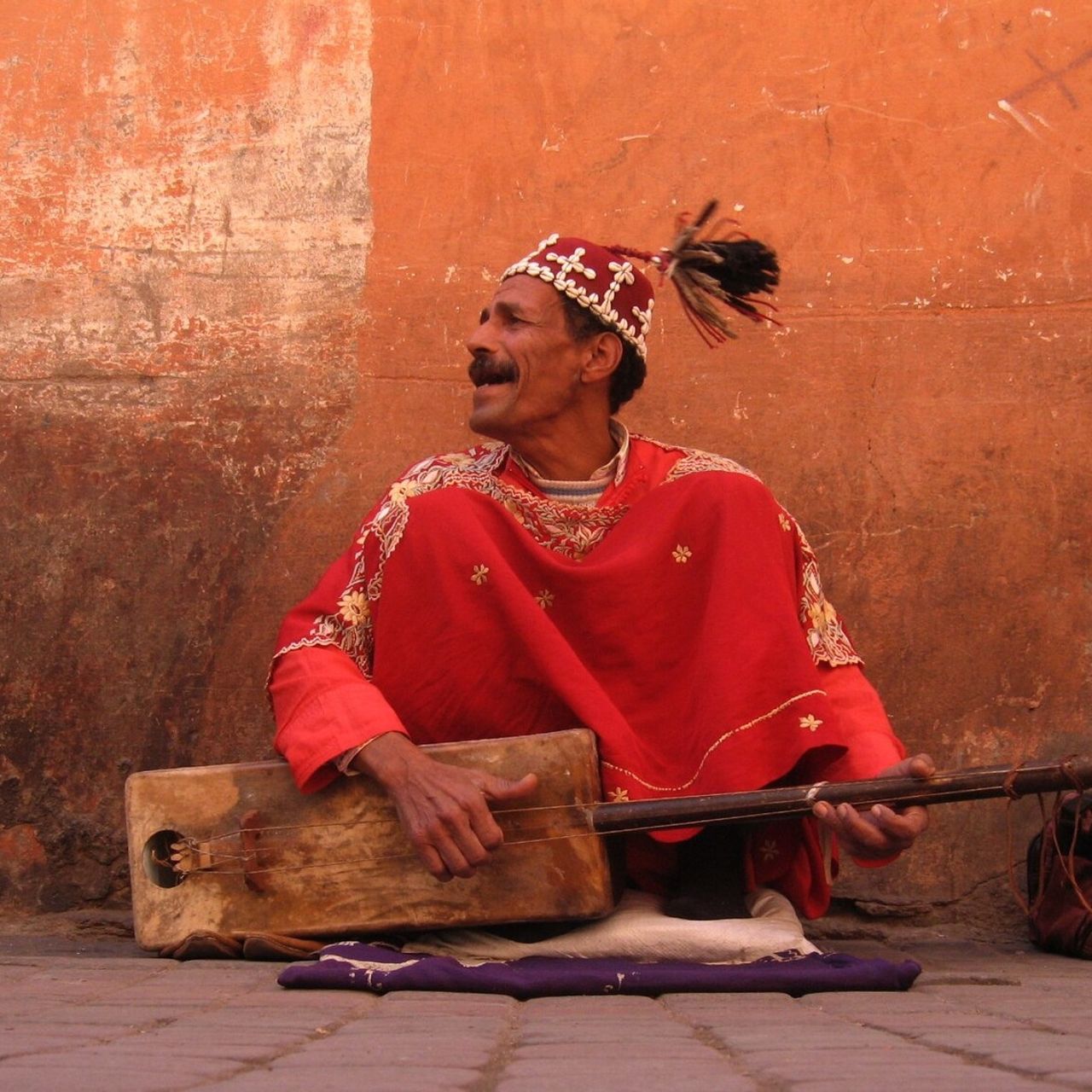The Gnaouas are not just a musical genre; this brotherhood has cultivated a world combining body expression, folk music, and spirituality.

History
Originally, the Gnaouas were slaves who arrived in Morocco with merchant caravans. Coming from Senegal, Sudan, and other Sub-Saharan countries, these men were placed in influential households or in service to the Sultan. Various theories attempt to clarify the appellation Gnaoua, also known as Gnawa. Ethnologist Maurice Delafosse provided an explanation based on etymological and historical data.
According to M. Delafosse, the word 'Gnaoua' stems from the Berber expression akal-n-iguinaouen, which means 'land of the blacks.' This Berber phrase is the origin of the words 'Guinea' and 'Gnaoua,' phonetically similar, meaning 'black men' or 'from the land of the blacks.'
Jemaa el Fna, the square of the Gnaouas
Founded in the 11th century, Jemaa el Fna Square stands out due to its diverse artistic and social potential, having been designated a UNESCO Intangible Cultural Heritage site since 2008. Numbering over 100 members, the Gnaoua brotherhood contributes to this richness, having coexisted on the square since 1966, along with the Hmadchas (dancers and singers of the popular Sufi tradition) and the Aïssawas (snake charmers and musicians from a mystico-religious order).
Positioned at the entrance of the square, the Gnaouas often wear brightly colored outfits. They are recognized by their red toque dotted with cowries, 'a shell that slaves inserted into their scepters which, when struck against the ground, emitted a sustained rhythm, a kind of release from the harsh conditions,' explains Moustapha Weld Ba Hmed, a Gnaoui from father to son. An emblematic figure of Jemaa el-Fna Square, this 51-year-old Marrakeshi emphasizes the spiritual dimension of Gnaoui music because according to him, 'The lyrics, sound, and rhythm of the Gnaoua music offer a form of therapy to the audience while presenting a spectacle of body expression: the acrobatic movements are synchronized with the melodies, plunging the Gnaoui into a trance, creating a mystical atmosphere around them.'.
A favorite attraction for visitors, the Gnaouas stand out with their unique instruments and distinct sounds such as the guenbri and the crotals.
In recent years, Gnaoua music has begun to gain international attention thanks to bands like Gnawa Diffusion and the National Orchestra of Barbes. On the national scene, Gnaoua music has its own festival. Established in 1998 in Essaouira, the Gnaoua Festival transforms the city into a sort of Moroccan Woodstock each year.
A crowning moment in 1995 when rock band Led Zeppelin, accompanied by Gnaoui musicians, gave a free concert in Jemaa el Fna Square. Incorporating melodies similar to jazz and blues, artists such as Randy Weston and Bill Laswell frequently collaborate with Gnaoui musicians for compositions and performances.
